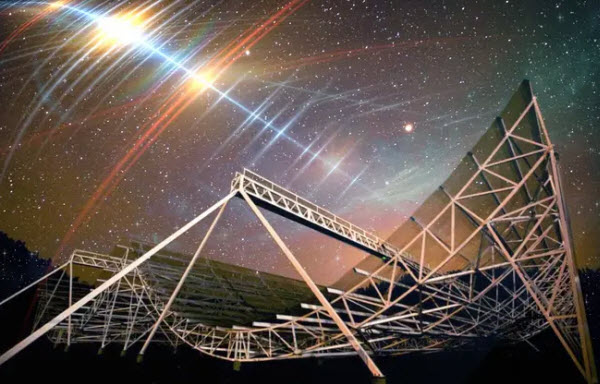Many believe, including the author of this article, that intelligent life exists beyond Earth, scattered across other planets and galaxies. Despite the recent findings from NASA’s space probes, which have been sent to explore planets within our solar system and have not discovered any concrete evidence of life, scientists continue to assert that the universe is vast enough to harbor other forms of life. However, the lack of technology to reach or communicate with them leaves this question unresolved. Recently, a peculiar radio signal was detected from the depths of space that differs from the previously known signals known as Fast Radio Bursts (FRBs). What makes this new signal unique is its recurring, cyclical pattern—a feature not seen in other signals.

The first pulsating radio signal of this kind was discovered in 2007, and it presented a mystery to space researchers. Since then, scientists have categorized two types of FRBs: one that emits a single radio signal and another that sends out multiple bursts, referred to as “repeaters.” While both types differ in their behavior, they share the characteristic of exploding intermittently before fading away completely. However, the newly discovered signal, dubbed FRB 180916, emanating from a galaxy approximately 500 million light-years away, represents an entirely different type of sender. Its distinguishing feature is a steady, periodic pulse, prompting a team of scientists to study it between September and October 2019 using a radio telescope. The team observed that the radio signal’s emissions tend to cluster during a four-day period, after which it disappears for the following 12 days. This pattern repeats in a consistent 16-day cycle, a phenomenon not observed in previous FRBs.

While much remains unknown about this radio signal, scientists have determined that it originates from a power source somewhere in deep space. The exact nature of this energy source, however, is still unclear. Several hypotheses have been proposed regarding the cause of this cyclical signal. One possibility is that it may come from a star or black hole, as both are known to exhibit periodic behaviors. The 16-day cycle could represent the orbital period of the object, during which the signal reaches Earth at a specific point in its orbit. Another theory suggests that the powerful signal may originate from a stellar-mass black hole or a highly dense remnant of a collapsed star, possibly a supernova, emitting radio waves from its surface hotspots as it spins, much like a lighthouse beacon.

Interestingly, recurring fast radio bursts (FRBs) were once thought to be extremely rare. However, a recent study identified 11 such signals in recent years. According to astronomer Pravir Kumar from Swinburne University in Australia, who helped uncover these signals, “One of the big unanswered questions about FRBs is whether all of them repeat or not. While more than a hundred FRBs are known, until recently, only one was found to repeat, suggesting that these bursts may not be as rare as once thought. It’s possible they are common, but their repetition is too weak for our current technology to detect.”
For now, the mystery of this deep space signal remains unsolved, leaving both scientists and astronomy enthusiasts intrigued. With hope, further discoveries of these fast radio bursts (FRBs) will one day unravel the nature of their mysterious origins.
